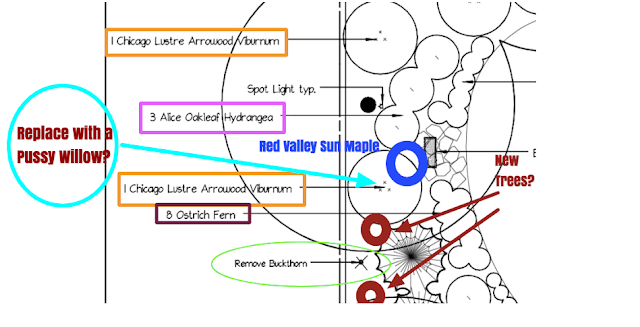First (Little) Wattle Fence In Our Stumpery - December 2023

Last month (November 2023), I discovered and then started (my own) stumpery in our backyard using a couple of various stumps and logs that I've collected over the years . They included a few Norway Maple crotches/stumps and (I think) some hollowed-out Buckthorn limbs that have little areas that I can plant ferns and what-not. The Stumpery is (currently) unplanted and will continue to evolve over time (hopefully), but it is the first real attempt at adding just a little bit of personality via what they call a " Garden Vignette ". I was out there and decided to try to make a little (short) wattle fence around the front of the Stumpery using some of the limbs that fell off this season. Below is a photo showing the small section of wattle that I quickly put together - it is about 3-feet-long and less than six-inches-tall: I've long thought about wattle fences - using whips of willow trees - but haven't pulled one off. Each season, I prune up my esp...
